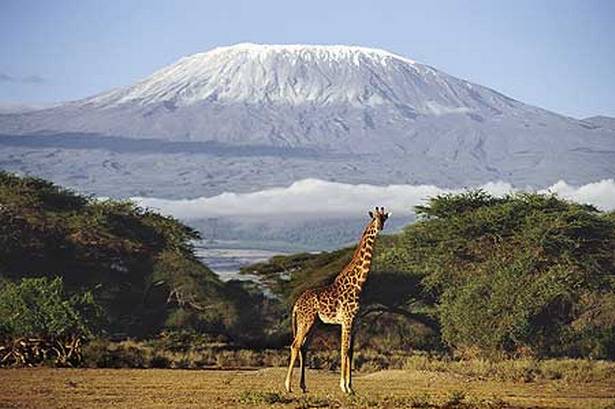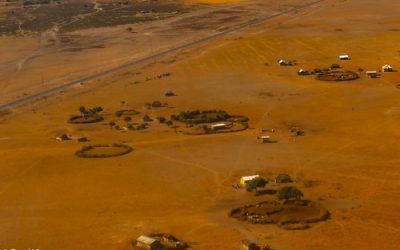Overview of Kilimanjaro Climate
Kilimanjaro, located in Tanzania, is renowned for its diverse and dynamic climate that varies significantly with altitude. The mountain’s weather patterns are influenced by its elevation, resulting in distinct ecological zones ranging from lush rainforests to snowy peaks. Understanding Kilimanjaro’s climate is essential for visitors planning expeditions or simply interested in the region’s natural environment. The weather on Kilimanjaro can be unpredictable, with cold temperatures and frequent changes, especially at higher altitudes, making it a unique and intriguing destination.
Geographical Location and Elevation
Kilimanjaro, located in northeastern Tanzania, is renowned for its diverse climate and stunning geographical features. Standing as Africa’s highest peak, it reaches an elevation of 5,895 meters (19,341 feet), making it a prominent landmark in the region. The mountain’s geographical location near the equator results in a varied climate that ranges from tropical at the base to arctic conditions at the summit. The weather on Kilimanjaro fluctuates significantly with altitude, experiencing warm, humid conditions in the lower regions, cooler temperatures and frequent rainfall in the middle altitudes, and cold, windy, and dry conditions near the summit. These climatic variations influence both the local ecosystem and the experience of climbers attempting to reach the summit, making Kilimanjaro’s weather a key factor for adventure tourists and scientists alike.
Climate Zones of Kilimanjaro
Kilimanjaro, located in Tanzania, features a diverse climate due to its high elevation and varied topography. The mountain’s climate zones range from tropical at the base to alpine conditions at the summit, creating a unique environment that influences weather patterns year-round.
- Lower Montane Zone: This zone has a warm, humid climate with rich rainforests and lush vegetation, experiencing temperatures typically between 10°C and 25°C.
- Montane Zone: Characterized by cooler temperatures, this region receives frequent rain, supporting dense forests and moorland ecosystems.
- Alpine Zone: Found at higher elevations, the climate becomes colder and windier with less vegetation, with temperatures dropping below freezing, especially at night.
- Summit Zone: The summit experiences arctic conditions with temperatures often below -10°C, strong winds, and low oxygen levels, creating a harsh environment even during the dry seasons.
Temperature Patterns
Understanding temperature patterns is essential for predicting weather conditions and planning outdoor activities, especially in regions with diverse climates like Kilimanjaro, Tanzania. The temperature variations in this area are influenced by elevation, seasonal changes, and atmospheric conditions, making it a fascinating subject for both travelers and meteorologists. Examining these patterns helps reveal how climate impacts the landscape and local ecosystems around Mount Kilimanjaro.
Average Temperatures by Altitude
Temperature patterns on Mount Kilimanjaro vary significantly with altitude, reflecting the elevation change from base to summit. As altitude increases, temperatures tend to decrease, resulting in cooler conditions at higher elevations. On average, temperatures drop approximately 6.5°C for every 1,000 meters gained, which is characteristic of the lapse rate in the troposphere. At the base of Kilimanjaro, temperatures can range from 20°C to 30°C in the lower regions, while the summit may experience temperatures as low as -20°C or colder. This variation creates distinct climate zones, from tropical at the base to glacial near the summit, impacting weather conditions and hiking experiences. Understanding these temperature patterns is crucial for climbers and visitors planning their visit to Kilimanjaro, as they prepare for the diverse weather conditions encountered at different altitudes.
Temperature Fluctuations Throughout the Year
Temperature patterns on Mount Kilimanjaro in Tanzania vary significantly throughout the year, influenced by altitude and seasonal changes. During the dry seasons, from June to October and December to February, temperatures tend to be more stable and milder at the base but drop sharply at higher elevations, especially on the summit. The upper regions can experience freezing temperatures, particularly at night, even during these warmer months. In contrast, the rainy seasons, from March to May and November, bring increased cloud cover and humidity, which can lead to more fluctuation in temperatures, especially at the lower altitudes. Overall, temperature fluctuations are most pronounced at higher elevations, with the summit sometimes registering temperatures below -20°C (-4°F), while lower parts of the mountain experience relatively mild and gradually changing temperatures throughout the year. These seasonal variations are crucial for climbers to consider when planning their ascent.
Rainfall and Humidity
Rainfall and humidity play crucial roles in shaping the climate of Mount Kilimanjaro in Tanzania. These elements influence not only the weather patterns but also the diverse ecosystems present on the mountain. Understanding the variations in rainfall and humidity is essential for travelers and trekkers planning their visit to this iconic peak, as they affect hiking conditions and the overall environment of Kilimanjaro.
Rainfall Distribution Across Seasons
Rainfall and humidity play a significant role in shaping the weather conditions around Mount Kilimanjaro in Tanzania. The region experiences high humidity levels, especially during the rainy seasons, which contributes to lush vegetation at the lower altitudes. Rainfall is generally abundant in the area, with the heaviest showers occurring during the long rainy season from March to May and the short rainy season in November and December. These seasons bring significant moisture, influencing the overall climate and making the environment vibrant and fertile. The distribution of rainfall across the seasons impacts local ecosystems and is an essential factor for climbers and visitors planning their trips to Kilimanjaro, as weather conditions can vary dramatically with the changing seasons, affecting accessibility and safety.
Humidity Levels at Different Elevations
Rainfall and humidity levels on Mount Kilimanjaro vary significantly with elevation, influencing the mountain’s climate and weather patterns. Understanding these variations is essential for travelers and researchers studying the region.
- At lower elevations, such as the base and the bushland zones, rainfall is relatively high, often exceeding 1,000 mm annually, leading to lush vegetation and higher humidity levels.
- As elevation increases, rainfall tends to decrease slightly in the montane zones but can still be substantial, with some areas receiving around 600-800 mm yearly, maintaining moisture levels that support diverse flora.
- At higher elevations, especially in the alpine zone near the summit, rainfall and humidity drop significantly, sometimes to less than 200 mm annually, resulting in drier conditions and lower humidity levels.
- The summit areas experience very low humidity, often below 20%, due to the thin atmosphere and cold temperatures, which contribute to the glacier and ice fields present on Kilimanjaro.
- Overall, the climate on Kilimanjaro is characterized by decreasing rainfall and humidity with increasing altitude, creating distinct ecological zones and challenging weather conditions for climbers.
Seasons and Weather Variability
Seasons and weather variability play a significant role in shaping the diverse climate of Kilimanjaro, Tanzania. Understanding the different weather patterns throughout the year helps visitors and explorers better prepare for the conditions they may encounter on their journey. From the dry periods ideal for trekking to the rainy seasons that bring lush greenery, the climate around Kilimanjaro is constantly changing, adding unique challenges and beauty to each season.
Main Seasons on Kilimanjaro
Kilimanjaro in Tanzania experiences distinct seasonal weather patterns that significantly affect climbers and the local environment. The mountain’s weather variability is influenced by altitude, topography, and seasonal climate changes, making it essential for travelers to understand the main seasons for planning their visits.
- Dry Season (June to October): This is considered the best time to climb Kilimanjaro due to minimal rainfall and clearer skies. Temperatures are cooler at higher elevations, but the dry conditions offer better visibility and safer trekking conditions.
- Rainy Season (November to May): Characterized by long rains from March to May and shorter, sporadic rains from November to December. During this period, trails can be muddy and slippery, and weather unpredictability increases, making it less ideal for trekking.
- Short Dry Season (January and February): Offers a brief window with less rain and clearer weather, often preferred by climbers seeking slightly better conditions outside the main dry season.
- Cool Temperatures Year-Round: Due to the high altitude, temperatures remain generally cool throughout the year, with temperatures dropping significantly at summit level, especially during the dry season.
Inter-Season Weather Changes
Seasons and weather variability on Mount Kilimanjaro in Tanzania are marked by distinct changes throughout the year, influenced by its unique geographical and climatic conditions. Understanding inter-season weather shifts is essential for climbers, trekkers, and outdoor enthusiasts planning visits to this iconic mountain.
- Dry Season (June to October): This period features clear skies, lower humidity, and minimal rainfall, making it the most popular time for trekking. The weather is generally cooler, especially at higher altitudes, providing stable conditions for ascents.
- Rainy Season (March to May and November): During these months, Kilimanjaro experiences increased precipitation, leading to cloud cover, muddy trails, and higher humidity. Weather conditions can be unpredictable, with frequent rainstorms and fog, which can hinder visibility and safety.
- Inter-Season Variability: Transition periods between these main seasons often bring fluctuating weather patterns. For instance, early June and late October may have sporadic rains and varying temperatures, impacting climbing safety and experience.
Best Times to Visit
Planning a trip to Kilimanjaro in Tanzania requires careful consideration of the weather to ensure a successful and enjoyable ascent. The best times to visit are typically during the dry seasons when the conditions are most favorable for trekking. Understanding the climate patterns helps adventurers choose the optimal months for climbing and exploring this majestic mountain.
Peak Climbing Seasons
The best times to visit Kilimanjaro in Tanzania are during the dry seasons when the weather is most favorable for climbing. Generally, these periods are from January to mid-March and from June to October. During these months, the skies are clearer, and the chances of rain and clouds are minimal, providing better visibility and safer climbing conditions. Peak climbing seasons typically coincide with these dry periods, making them the most popular times for trekkers to conquer Africa’s highest peak. It is advisable to plan your ascent during these optimal weather windows to ensure a smoother and more enjoyable experience on Kilimanjaro.
Off-Peak Periods and Considerations
The best times to visit Kilimanjaro in Tanzania typically fall during the dry seasons, which are from January to mid-March and from June to October. These periods offer clear skies and minimal rain, making hiking safer and more enjoyable. Off-peak periods, usually during April, May, and November, see increased rainfall and cloud cover, which can affect visibility and trail conditions. Travelers should consider these factors when planning their trip, as the weather can influence the success and safety of trekking to Kilimanjaro’s summit. Additionally, booking accommodations and permits well in advance during peak seasons is advisable to avoid shortages and higher costs.
Impact of Weather on Trekking and Climbing
The weather on Mount Kilimanjaro in Tanzania plays a crucial role in shaping the trekking and climbing experience. Variations in temperature, precipitation, and wind can significantly impact safety, difficulty, and timing of expeditions. Understanding the climate patterns is essential for climbers to prepare adequately and ensure a successful journey to the summit.
Weather-related Risks and Precautions
The weather in Kilimanjaro, Tanzania, plays a crucial role in the safety and success of trekking and climbing expeditions. Varying temperatures, high winds, and frequent storms can significantly affect climbers’ stamina and equipment performance. Understanding the local weather patterns helps trekkers prepare appropriately and minimize risks associated with sudden weather changes.
Weather-related risks on Kilimanjaro include altitude sickness exacerbated by cold conditions, hypothermia from exposure to low temperatures, and dehydration caused by dry, windy environments. Sudden storms and heavy rain can lead to slippery trails, increasing the likelihood of falls and injuries. Additionally, high-altitude wind chill can cause frostbite in exposed skin if proper precautions are not taken.
To mitigate these risks, climbers should monitor weather forecasts carefully, pack suitable clothing such as layered thermal gear, waterproof jackets, and sturdy hiking boots. It’s essential to ascend gradually to acclimate to changing conditions and to be prepared for possible delays caused by adverse weather. Adequate hydration, proper nutrition, and attentive health monitoring further contribute to a safer climbing experience on Kilimanjaro.
Preparation for Variable Conditions
The weather conditions on Mount Kilimanjaro significantly influence trekking and climbing experiences, making preparation crucial for safety and success. Variations in temperature, rainfall, and wind can impact a trekker’s ability to progress comfortably and securely. Understanding the weather patterns in Tanzania is essential, as Kilimanjaro’s climate varies from tropical at the base to arctic at the summit, often leading to unpredictable conditions. Trekkers must be ready for sudden weather changes, including rainstorms, snow, and intense sun exposure, especially during the dry season. Proper gear such as layered clothing, waterproof attire, and sturdy boots are vital for adapting to these variable conditions. Monitoring weather forecasts and choosing the right time of year for the trek also greatly enhance safety, reducing risks posed by adverse weather. Adequate preparation ensures that climbers can handle Kilimanjaro’s challenging environment, making the adventure memorable and successful regardless of the weather surprises along the route.





0 Comments